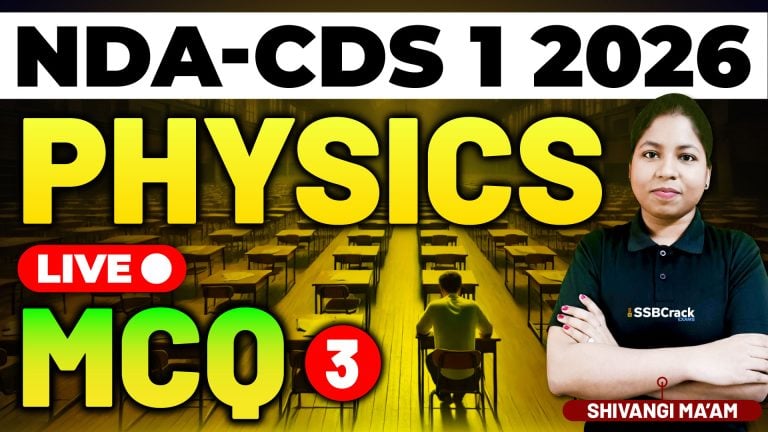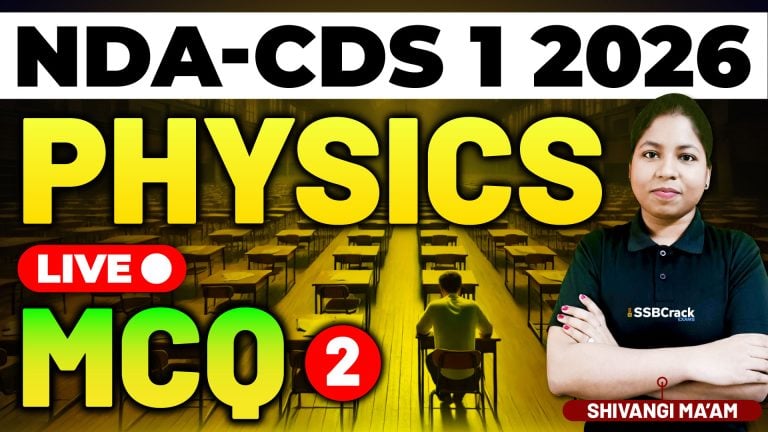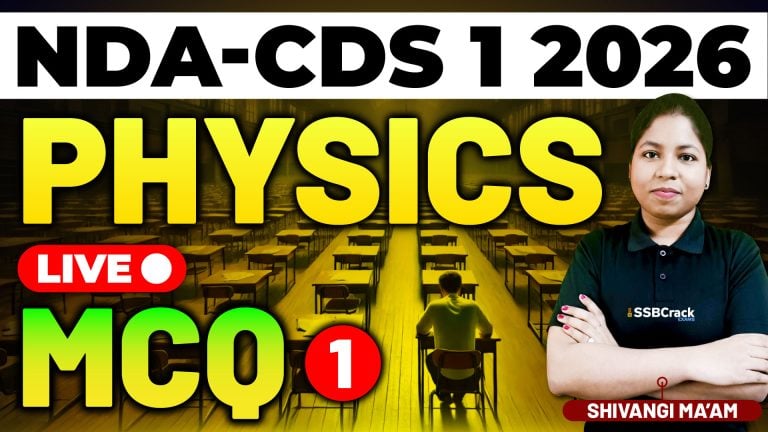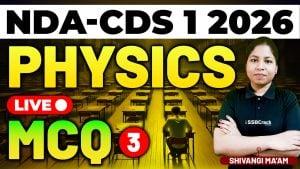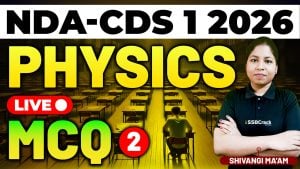Inequalities are an essential topic for the National Defence Academy and Naval Academy (NDA-NA) Exam – Paper I in Mathematics. A recent class covered this topic in detail, focusing on the properties of inequalities, how to solve them, and their representation on graphs. This blog aims to provide a clear understanding of inequalities, along with key strategies for mastering this topic for the NDA-NA exam.
What are Inequalities?
Inequalities describe a relationship between two expressions that are not equal. Unlike equations, where two expressions are set equal to each other, inequalities use symbols such as:
- Greater than (>)
- Less than (<)
- Greater than or equal to (≥)
- Less than or equal to (≤)
These symbols define a range of possible values that satisfy the given inequality, rather than a single solution.
Key Properties of Inequalities
Understanding the properties of inequalities is crucial for solving problems efficiently. Here are the most important properties covered in the class:
- Transitive Property:
- If one value is greater than a second value, and the second value is greater than a third, then the first value is greater than the third. For instance, if (a > b) and (b > c), then (a > c).
- Addition and Subtraction:
- You can add or subtract the same number on both sides of an inequality without changing its direction. For example, if (a > b), then (a + c > b + c), and (a – c > b – c).
- Multiplication and Division:
- Multiplying or dividing both sides of an inequality by a positive number keeps the inequality in the same direction. However, when multiplying or dividing by a negative number, the direction of the inequality flips. For instance, if (a > b), then multiplying both sides by a negative number will result in (a < b).
- Combining Inequalities:
- You can combine two inequalities to find a solution set when both inequalities are satisfied simultaneously. This can lead to useful conclusions about ranges of values that solve both inequalities.
Solution Set of Inequalities
The solution set of an inequality is the range of values that make the inequality true. This range can be finite or infinite, depending on the nature of the inequality. The solution set is often represented using interval notation, which provides a clear understanding of which values fall within the range.
Open and Closed Intervals:
- Open Interval: In an open interval, the boundary values are not included in the solution. For instance, the range between two numbers, where neither is included, is denoted with parentheses.
- Closed Interval: In a closed interval, the boundary values are included in the solution. This is denoted with square brackets.
- Mixed Intervals: It is also possible to have one boundary included while the other is not, leading to a mixed interval.
In NDA-NA exams, you may be asked to identify the correct solution set or to convert between different forms of representation (such as interval notation, set notation, or graphical representation).
Solving Inequalities
Solving inequalities follows many of the same principles as solving equations, but with extra care taken when multiplying or dividing by negative numbers. The steps generally include isolating the variable, simplifying the inequality, and then identifying the correct solution range.
Steps to Solve an Inequality:
- Move all terms involving the variable to one side of the inequality.
- Combine like terms and simplify both sides.
- Apply addition, subtraction, multiplication, or division to isolate the variable.
- Remember to reverse the inequality sign if you multiply or divide by a negative number.
- Express the solution in interval notation or as a solution set.
Graphical Representation of Inequalities
A crucial aspect of inequalities is understanding how to represent their solution sets graphically. Graphing inequalities helps visualize the range of solutions, especially when dealing with linear or quadratic inequalities.
Number Line Representation:
A simple inequality can be represented on a number line by shading the portion of the line that satisfies the inequality. Open circles are used for inequalities where the boundary is not included, and closed circles for those where the boundary is included.
For example, if an inequality specifies that a value is greater than 2 but less than or equal to 5, the number line would have an open circle at 2 and a closed circle at 5, with the portion between them shaded.
Graphing on a Coordinate Plane:
For inequalities involving two variables, such as linear inequalities, the solution is represented as a region in the coordinate plane. This region is often bounded by a straight line, where one side of the line represents the solution set, and the other side does not. The line may be dashed (indicating the points on the line are not included in the solution) or solid (indicating the points on the line are part of the solution).
For quadratic inequalities, the solution is often a shaded region above or below a parabolic curve.
Strategies to Master Inequalities for NDA-NA Exam
Preparing for the inequalities section of the NDA-NA exam requires a clear understanding of concepts and regular practice. Here are some key strategies to help you succeed:
1. Master the Basics
- Ensure that you thoroughly understand the properties of inequalities and the different types of inequalities (linear, quadratic, etc.). These are the foundation upon which more complex problems are built.
2. Practice Graphical Representation
- Many NDA-NA questions will ask you to represent inequalities on a graph. Spend time practicing how to draw inequalities on both a number line and a coordinate plane. Pay close attention to whether the boundary values are included or excluded.
3. Work on Speed and Accuracy
- Since the NDA-NA exam is time-constrained, work on solving inequalities quickly and accurately. Practice simplifying inequalities and using logical steps to reach the solution without errors.
4. Focus on Multi-Step Inequalities
- The exam may include multi-step inequalities where you need to combine two or more inequalities or apply several operations to arrive at the solution. Be comfortable with solving these types of problems by practicing regularly.
5. Understand Interval Notation
- Get familiar with expressing the solution sets of inequalities in interval notation. This is a common way to represent answers, so mastering it will help you quickly identify correct options in the exam.
6. Take Mock Tests
- Regularly take mock tests that focus on inequality problems. These will help you get accustomed to the types of questions you can expect in the exam and how they are presented. Mock tests also improve time management and exam readiness.
7. Revise Key Concepts
- Keep revisiting the key concepts of inequalities, especially how to handle negative numbers, work with interval notation, and graphically represent inequalities. Regular revision will help these concepts stay fresh in your mind, making you more confident during the exam.
8. Avoid Common Mistakes
- A common mistake when solving inequalities is forgetting to flip the inequality sign when multiplying or dividing by a negative number. Practice avoiding this mistake by working on problems that specifically involve negative numbers.
Conclusion
Inequalities are an important and often overlooked topic in the NDA-NA Exam – Paper I Mathematics section. By mastering the properties of inequalities, understanding how to solve them, and being able to represent solutions graphically, you can significantly improve your performance in this area.
This recent class provided a solid foundation for tackling inequalities, and with consistent practice and application of the strategies discussed, students can approach this topic with confidence. Remember that clarity, accuracy, and speed are key to success in the NDA-NA exam, and focusing on these elements in your preparation will ensure you are well-equipped to solve inequality problems effectively.


